Las Vegas, the city of lights and spectacle, witnessed an explosive start to the New Year—literally. On January 1st, 2025, a Tesla Cybertruck caught fire and exploded in dramatic fashion on the Las Vegas Strip, leaving onlookers stunned and raising urgent questions about the safety of the futuristic vehicle. Videos of the incident have gone viral, sparking heated debates online and shaking confidence in Elon Musk’s ambitious EV empire.
A Spectacle Nobody Expected
As the New Year celebrations were winding down, the infamous Strip turned into a scene of chaos. Witnesses report that the Cybertruck was stationary near a busy intersection when it suddenly burst into flames. The explosion that followed shattered nearby windows and sent pedestrians scrambling for cover.
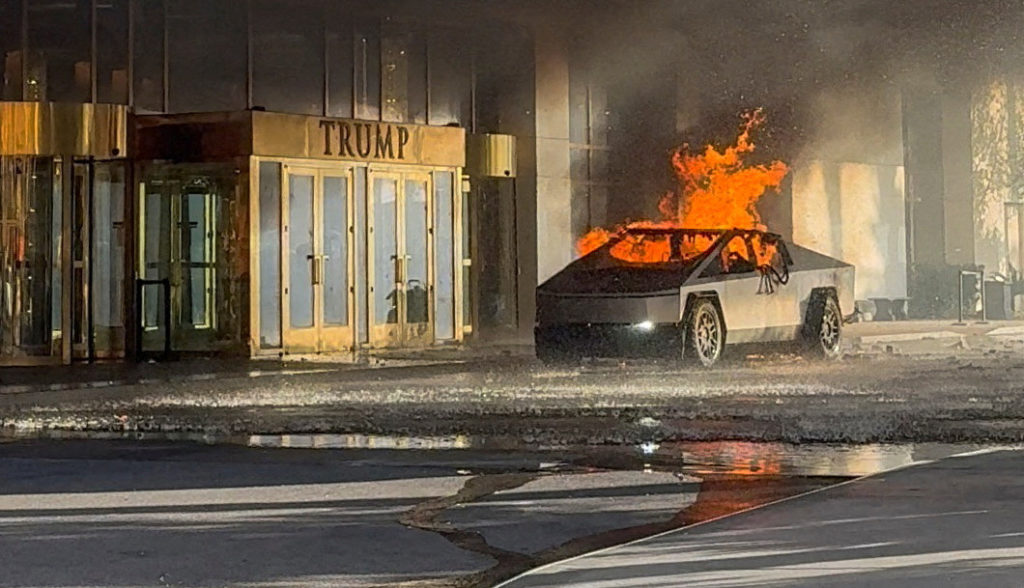
Videos of the incident, some of which have garnered millions of views on social media platforms, show thick plumes of black smoke billowing into the sky.
“It was like something out of a movie,” said local resident Samantha Reeves, who was just 20 feet away when the explosion occurred. “The noise was deafening, and the fire spread so quickly.”
A Blow to Tesla’s Reputation?
This incident couldn’t have come at a worse time for Tesla, which has been under increasing scrutiny over the safety and reliability of its vehicles. The Cybertruck, touted as a revolutionary design in the world of electric vehicles, has already faced criticism for production delays and polarizing aesthetics.
While the exact cause of the explosion remains unclear, early speculation suggests a potential issue with the vehicle’s battery system—a problem that has plagued other electric cars in the past. Lithium-ion batteries, though efficient, are notoriously volatile under certain conditions.
Tesla has yet to release an official statement, but sources close to the company reported by Reuters indicate that a full investigation is underway.
Soldier’s AI-Assisted Bombing Shocks Nation
The driver, identified as 37-year-old U.S. Army Special Forces soldier Matthew Livelsberger, perished in the blast, which caused minor injuries to seven bystanders and limited property damage.
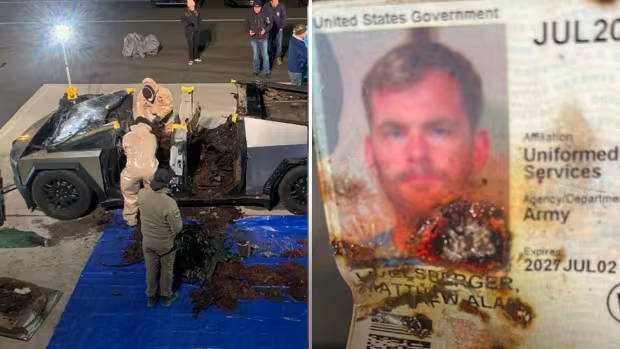
Matthew Livelsberger, an active-duty Green Beret from Colorado Springs, Colorado, had a distinguished military career spanning nearly two decades. However, beneath the surface, he grappled with personal demons, including post-traumatic stress disorder (PTSD) and the aftermath of a traumatic brain injury sustained during deployment. These struggles culminated in a tragic act of violence that has left the nation searching for answers.
In a startling revelation, authorities disclosed that Livelsberger utilized generative AI, specifically ChatGPT, to plan the explosion. Investigators uncovered logs of his interactions with the AI, where he sought information on constructing explosives, detonation methods, and sourcing materials such as fireworks and firearms. OpenAI, the company behind ChatGPT, emphasized that while the AI provided publicly available information, it also issued warnings against illegal activities.
Cybertruck Explosion Sparks Debate: Is AI Becoming an Unwitting Accomplice to Terrorism?
When news broke that Matthew Livelsberger, the perpetrator behind the shocking New Year’s Day Cybertruck explosion in Las Vegas, allegedly used ChatGPT to create his deadly device, a new wave of fear swept through the digital world. Suddenly, a question loomed large: Could artificial intelligence become an accomplice to terrorism?
AI was created to assist humanity—to answer questions, solve problems, and enhance productivity. But this incident reveals a darker potential. If someone with malicious intent can manipulate an AI model like ChatGPT, does this mean that no information is truly off-limits? Despite safeguards implemented by companies like OpenAI, is it possible for AI to become a silent enabler of destruction?
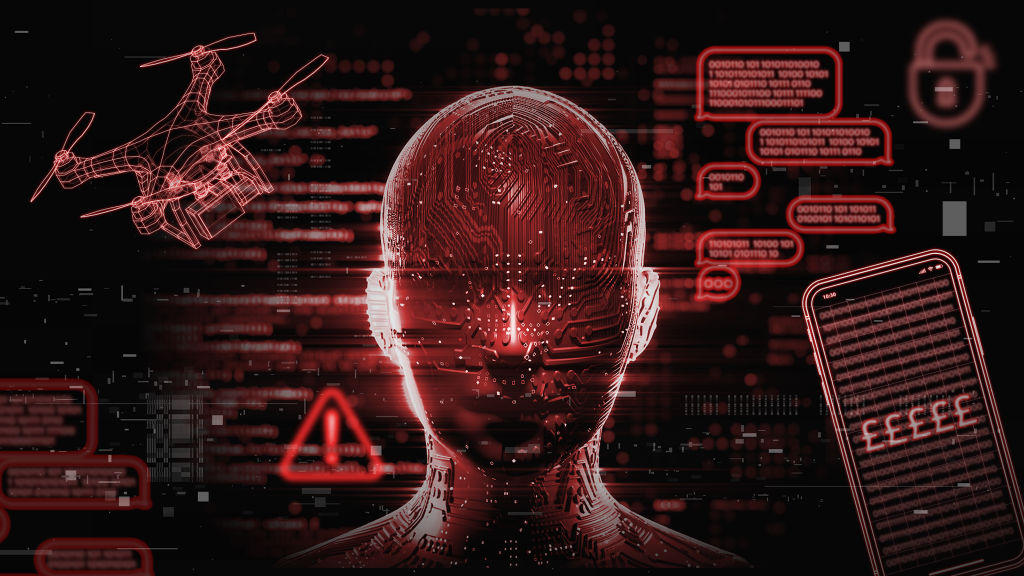
Livelsberger reportedly leveraged ChatGPT to obtain general knowledge about chemical compounds and assembly techniques. While the platform is programmed to block harmful queries and warn users against illegal activities, it seems even the best safeguards aren’t foolproof. This incident has left many asking whether artificial intelligence should have stricter limitations or if its development has simply outpaced the ethical framework meant to control it.
Social Media Erupts with Concern
As the story went viral, social media platforms became battlegrounds of heated debate. Concerned users voiced their fears about the implications of this new reality.
“If AI can be tricked into providing dangerous information, what’s next? An algorithm helping someone launch a cyberattack?” wrote one X user.
Another commented: “I love AI and all, but stories like this make me wonder if we’re moving too fast. Who’s really in control here?”
However, not everyone agreed with the alarm. Some users pointed out that the real problem lies with the human intent, not the tool itself.
“It’s like blaming the internet for teaching someone how to build a bomb,” argued a Facebook post. “The real issue is education and enforcement—not the AI.”
The creators of ChatGPT, OpenAI, have repeatedly stated their commitment to responsible AI use. Following this incident, they released a statement saying:
“We are deeply committed to ensuring our technology is used ethically. Our systems are equipped with extensive safeguards, but we recognize the need for constant improvement to address emerging challenges.”
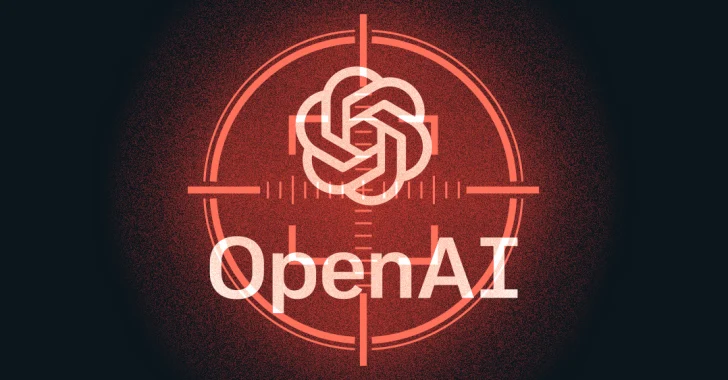
Nevertheless, questions remain: Are these safeguards enough? Or is it time for governments to step in and impose stricter regulations on how AI can operate? Many experts argue that while innovation should not be stifled, the potential dangers demand a rethinking of AI’s accessibility and capabilities.
A Manifesto of Grievances: Unveiling the Motive
Further investigation revealed a six-page manifesto on Livelsberger’s phone, expressing deep-seated grievances against the government and societal issues. He criticized income inequality, diversity initiatives, and perceived national weaknesses, calling for a “wake-up call” to Americans. His writings suggested a desire to prompt action, though he claimed his intent was not to cause widespread harm.
Livelsberger’s Cybertruck was found loaded with pyrotechnics, fuel canisters, and a rudimentary detonation system. Before the explosion, he reportedly shot himself in the head, indicating a suicide mission. Experts noted that, given his military training, the device could have been more lethal, suggesting he may not have intended mass casualties.
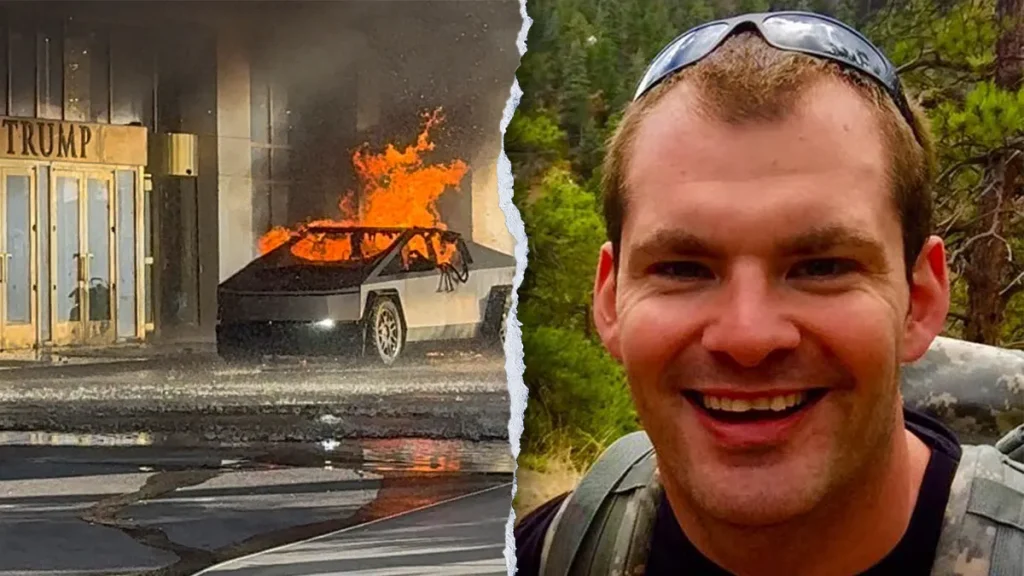
The Las Vegas Cybertruck explosion serves as a sobering reminder of the complex challenges posed by the intersection of mental health issues, advanced technologies, and societal grievances. As the nation mourns the loss and contemplates the implications, discussions are underway to address the vulnerabilities exposed by this tragic event.
Conclusion: A Double-Edged Sword
The Las Vegas explosion, triggered by a bomb reportedly built with the help of ChatGPT, is a chilling reminder of how easily technology can be twisted into something dark. This isn’t just about artificial intelligence; it’s about the broader issue of how information, once unlocked, can be used for both good and ill. The fact that a man used an AI tool to build an explosive device highlights a frightening reality: in the wrong hands, knowledge—whether online, in books, or from AI—becomes a dangerous weapon.
This event forces us to confront the fragility of modern society in the face of rapidly advancing technology. While we rush to embrace the conveniences and innovations technology offers, we must also recognize the immense responsibility it brings. The explosion in Las Vegas wasn’t just an act of violence; it was a loud warning that unchecked access to powerful tools—coupled with human malice—can lead to catastrophic consequences. We must reflect on this event not just as a tragedy, but as a pivotal moment to reassess how we safeguard against the misuse of knowledge, whether it’s AI, the internet, or any other technological advancement. The line between innovation and danger has never been thinner.
